Why does the word 'sport' light up on my dashboard?
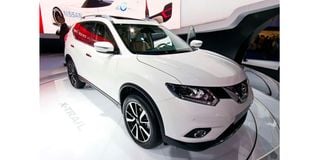
Nissan X-trail.
I have a 2013 Nissan X-trail. There is a button on the gear lever that lights up the word “Sport” on the dashboard. What does it mean and what does it do?
RI
Almost nothing physically. A little bit psychologically. Many recent models have the “Sport” option, and most of them only change the sensitivity of the accelerator pedal.
On all cars, acceleration is achieved by opening a tap which allows petrol into the engine. The more you open the tap, the more petrol arrives, the more power is generated and the car accelerates.
The tap (in the carburettor or injector) is called the “throttle”, and is opened or closed by the driver via a wire cable attached to the accelerator pedal. If you pressed the accelerator half way down the throttle half opened. Put your foot the floorboards and the throttle fully opened.
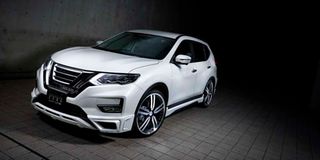
Nissan X-trail
Nowadays a system called ETC (Electronic Throttle Control) is increasingly common. Instead of using a wire cable, the accelerator pedal operates a little electric motor which adjusts the throttle opening (like turning up the volume knob on a radio).
In normal mode, a half-pressed accelerator pedal will half open the throttle. But in “Sport” mode the electric motor setting is changed, so the throttle initially opens by more than the pressure on the accelerator. It makes the car feel brighter and more responsive but does nothing that cannot be achieved by pressing the accelerator harder. Actual “performance” is unchanged.
On more high performance cars, which often have highly sophisticated computerised management of many functions, the “Sport” setting not only changes the ETC but also the stiffness of the suspension, the turning ratio of the steering, and tells the automatic gearbox to allow higher revs before changing gear, and can even alter things like computerised traction control and gear ratio steps. Those can make a real difference to how a car handles and performs.
ETC on its own does not. The maximum size of the “tap” does not change, whether it is opened by a wire cable or an electric motor.
The first “hybrid” experiments happened ages ago
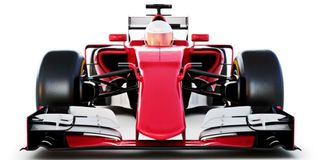
If the battery on a hybrid car gets damaged, will the car run like an ordinary car or is it going to be affected in other areas apart from increased fuel consumption?
TM
Be careful using the term “hybrid” as a catch-all. There is a very wide range of fundamentally different configurations stretching all the way back from the present to the first “hybrid” experiments more than a century ago.
As a perspective on how big that difference can be, consider these two vehicles: 1 A moped. 2 A Formula 1 racing car. Both have hybrid power systems. In the middle world of cars, some hybrids have one motor and others have two…or more. Some are principally electric motors with a petrol-powered booster/charger, others are petrol-powered with an electric auxilliary or accumulator.
There are bi-fuel and flexible fuel hybrids, petro-air and hydraulic hybrids. The various power unit options might be designed to work either independently at different times or together at the same time.
Clearly, any combination that has an electric motor either as its principal propulsive force or as an auxilliary booster will not function fully or properly with a damaged battery. The degree of deterioration (from severe to total) will depend on the switching system of each particular system.
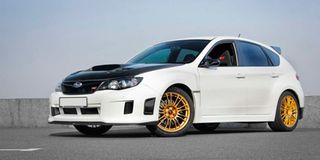
Subaru Impreza
What will happen to my car if I get rid of turbo?
Hello,
Suppose you remove turbo (forced induction, FI) from a car, will it run like a normally aspirated (NA) car or will it be lazier?
Timothy M
If a turbo fails (why else would you “remove” it?) there will be a profound loss of power. Depending on the fault, the engine might not be able to rev much above idle and seriously struggle to go up hill, or might not go at all.
The fault can range from a simple split-leak in an air tube to major structural damage to internal bearings, blades and shafts. Your ears will tell you which it probably is.
Professional restorers can fix most faults for a lot less than the cost of a new turbo, but even if a replacement is needed, that will probably be a better investment than removal. Converting an NA car to turbo, or the other way around, involves a lot more than bolt-on or bolt-off. There can be up to 20 other associated components that might need changing to assure performance and reliability.
Are you taking notes? The gentle art of fuel economy
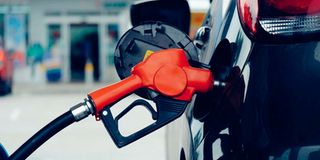
Fuel economy.
Gavin,
Glad to see you here again after your regular column in the Sunday Nation. I am a young driver and many are the times I hear about efficient driving or bad driving in fuel economy and performance. Please explain “good efficient driving”.
Rabi I
Short answer: Accelerate more gently, get into a higher gear a bit sooner, moderate your cruising speed and ease off earlier before you start to brake. Everything smoothly and gently, as if you have a full bowl of water on the dashboard and don’t want to spill it.
This will not only optimise your fuel economy, but will minimise wear and tear on every other component, too (brakes, tyres, engine, transmission…and passengers.)
Fuller answer: There are five main factors which determine how many kilometers your car will go on a litre of fuel.
The first is the design of the vehicle itself - especially the size and design of the engine; the size, weight and aerodynamic shape of the body; the power-weight ratio, and also its gearing and its fuel induction system (carburettor, fuel injector etc). This is each make and model of vehicle’s in-built design efficiency (or otherwise). It sets absolute top and bottom limits on fuel consumption, but the potential range is huge (on an average 1600cc car anywhere from 6 kilometers per litre to 16 kilometers per liter. Which end of that range you get nearest to depends on the other four factors…
…starting with the vehicle’s service condition – the state of wear in the engine and the whole transmission train, the setting and lubrication of all moving parts, the tuning of fuel/air mixture, the timing, and the condition of the ignition (plugs and points), wheel alignment, tyre pressure etc. Again, these do not determine what your final fuel consumption will be, but they will either optimise or diminish the car’s economy potential quite significantly depending on whether the car is in perfect running order or seriously worn or defective. Good condition will not only optimise economy, it will also deliver good performance when you want or need it.
A third key factor is the road condition – a hard, smooth surface absorbs much less energy than a soft or rough surface; straight and flat is more economical than twisty or hilly; open road cruising at a steady speed is more efficient than the stop-start of heavy traffic, and so on. Even the temperature and weather can have some effect – cool and damp being best.
A fourth factor is the load the vehicle is carrying. It’s an immutable fact of physics that the heavier the weight that has to be moved, the more energy is required to move it, so every kilo of weight you add to your car will increase the amount of fuel it consumes. The greater the increase in weight, the greater the increase in fuel consumption.
You can exercise a certain amount of control over these factors (especially service condition) but in practice for most motorists most of the time, theory meets a reality check: this is the vehicle you have, this is the condition it’s in, this is the road it is travelling, and this is the load it is carrying.
Now; what can still be done to make fuel consumption either better or worse?
Enter factor number five: the way you drive.
Even if all other factors (design, condition, road and load) are equal, driving technique alone can make a huge difference to fuel consumption and to general wear-and-tear. At one extreme is the driving style of rallying, characterised by phrases like “foot flat” and “max revs”. In translation, the driver’s right foot is always pressed hard to the floorboards either on the accelerator or the brake; the rev counter needle is always near the red line, in the lowest gear possible for maximum power, steering movements and gear changes are frequent and violent. All done on split-second and last-second reflexes.
This technique in the quest for the highest possible speeds at all times not only maximises fuel consumption, it also imposes maximum stress and wear on all working parts of the engine and transmission and suspension and brakes, and if the car is powerful and there are plenty of corners, it can tear a brand new set of tyres to shreds in less than an hour!
Driven in this way, the average 1600cc family car would guzzle fuel at the rate of about 6 kilometers per litre and, incidentally, would need a new set of tyres and brakes every 1,000 kilometers, and be a worn-out wreck before it reached 10,000 kilometres. This is very relevant to the ordinary motorist, because if this is the way to maximise fuel consumption and wear, then precisely the opposite technique is what will minimise fuel consumption and wear.
Never foot flat. Never max rev. Never drive violently. Go for mostly gentle and gradual with the lightest possible touch, whether you are accelerating or cornering or braking. Mostly in the highest possible gear without labouring the engine. Mostly at moderate speeds. And always anticipating the road and traffic ahead, so nothing has to be done at the last second. A car kept in good condition and diven skillfully in this way will have a fuel economy more than 100 percent better than the “rallying” extreme, and probably 20 percent better than the average achieved in “ordinary” motoring.
I’m not talking here about the super tricks of “economy run” driving. These are competitive, and can get almost as bizarre as rally techniques.
To give you some benchmarks for ordinary motoring…economically:
Gradual acceleration and easing off well before a slowing or stopping point, so you hardly have to brake at all and then only softy. You might sometimes have to (and should) compromise these principles in busy highway traffic – especially when overtaking. Don’t use up the rare moments when the road ahead is all-clear of oncoming traffic by dawdling. Change down a gear and pass under full power. If your car has a rev counter, you should generally motor between 2,000 and 3,000 rpm except in emergencies or other exceptional circumstances (like overtaking). Every gear change should take place at or before 3,000 rpm. In fifth gear, that will be a cruising speed of about 100 kilometers per hour for most cars.
If you don’t have a rev counter, use that 100 kilometers per hour in fifth gear as your benchmark and remember the engine note. Routinely, do not work the engine harder than that in any gear.
In all respects, think HALF. Half the vehicle’s maxium revs, acceleration or speed. Half its payload. It’s then working well within its design capacity and thus never strained. That means minimum wear…and minimum fuel consumption. Don’t neglect routine service items: lubrication, tyre pressures, plugs and points, filters. Over regular service intervals, keeping these items in top shape will save you more in petrol than it will cost you in maintenance. Delaying or neglecting service is a false economy.
Now your lifestyle (or travel itinerary) may not readily conform to this gentle driving pattern. So be it. But then the higher cost of your motoring will be your own choice. It is possible to ensure lower fuel consumption, lower maintenance bills, less wear and tear. Optimum economy does not lie in short-cuts and neglect. It lies in care and doing things properly – both behind the wheel and in the workshops.
Do you have a motoring question? Email [email protected]





